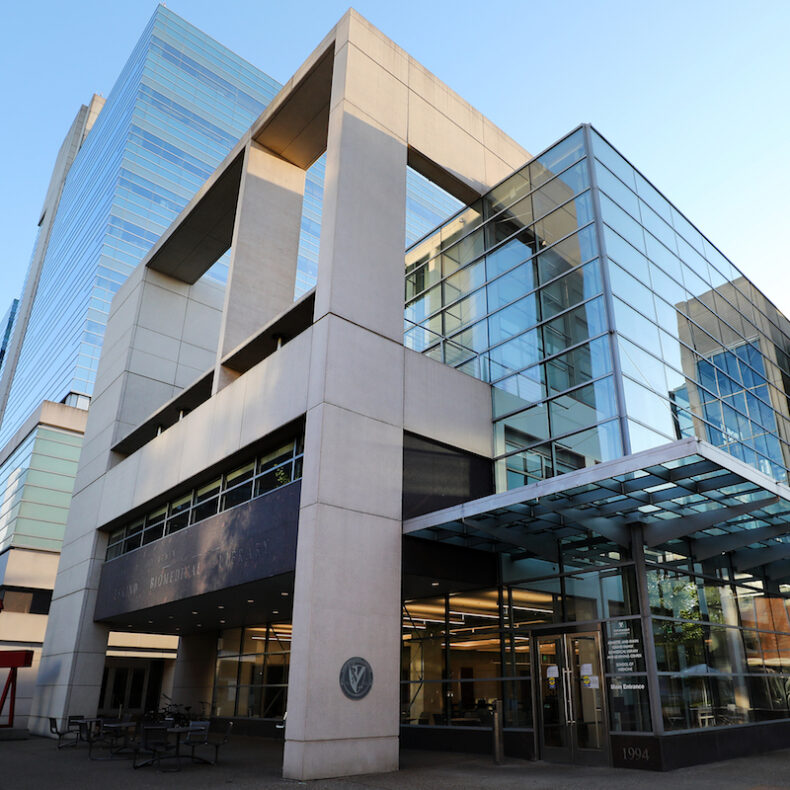According to annual figures available through the National Institutes of Health (NIH), Vanderbilt University School of Medicine (VUSM) is now ranked ninth in the nation among U.S. medical schools in total grant support provided through the nation’s medical research agency.
Receiving $292,413,440 in NIH grant support during calendar year 2013, VUSM moved up four places from its 2012 ranking by adding an additional $5,723,560 in funding.
NIH funding support is considered a key indicator of an institution’s overall strength in biomedical research.
Funds from the NIH enable Vanderbilt’s scientists to advance the University’s pioneering mission to understand the underlying causes and develop treatments for many devastating adult and childhood diseases. Vanderbilt’s researchers are seeking answers to diseases and disorders that cost the U.S. economy nearly $3 trillion each year, including autism, Alzheimer’s disease, cancer, cardiovascular disease, diabetes and Parkinson’s disease.
“The availability of federal research funding for our nation’s academic medical centers has been contracting over the last decade,” said Jeff Balser, M.D., Ph.D., vice chancellor for Health Affairs and dean of the Vanderbilt University School of Medicine. “The NIH continues to face significant challenges, including the impact of the 2013 federal sequester.
“As a result, the national funding climate for research is fiercely competitive, and yet our investigators and their research teams continue to have unparalleled success. Their success is just remarkable and something we should celebrate,” Balser said.
This year, four of VUMC’s basic science research departments and six of its clinical departments are ranked among the nation’s top 10 in NIH funding relative to similar departments at peer institutions.
Among VUMC’s basic science departments, both Biochemistry and Molecular Physiology & Biophysics are ranked first among peers. Pharmacology is ranked second while Cell and Developmental Biology is ranked fourth. Six of VUMC’s clinical departments, housing more than 2,000 faculty who care for patients while leading basic and clinical research activities, ranked among the top 10, including: Internal Medicine, fourth; Pediatrics, ranking fourth; Radiology & Radiologic Sciences, seventh; Anesthesiology, eighth; Otolaryngology and Hearing & Speech Sciences, eighth, and the Section of Surgical Sciences, eighth.
“Our collective success in obtaining funding is really a direct outcome of our creative approaches and our working together across disciplines, departments and schools to address the most pressing problems in health and health care. We are tremendously proud of the partnerships forged between faculty, trainees and staff in these efforts,” said Susan Wente, Ph.D., associate vice chancellor for Research and senior associate dean for Biomedical Sciences.
Each institution’s funding data are compiled by the independent Blue Ridge Institute for Medical Research from figures available through the 2013 award files obtained from the Research Portfolio Online Reporting Tool (RePORT) from the National Institutes of Health. Figures include direct plus indirect costs but exclude research contracts and ARRA (stimulus) grants.
The NIH is the world’s largest funding source for biomedical research. More than 80 percent of the NIH’s budget supports more than 300,000 research personnel at more than 2,500 universities and research institutions. About 6,000 scientists work in the NIH’s own Intramural Research laboratories in Bethesda, Md. — comparable to the number of faculty and staff performing NIH-funded research at Vanderbilt.
A 2011 commissioned study by the American Association of Medical Colleges found that Tennessee’s research institutions contribute nearly $1 billion in economic impact each year to the state’s economy.















